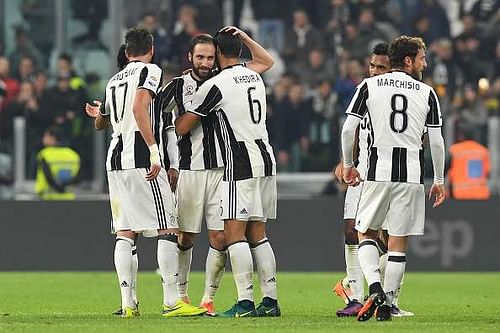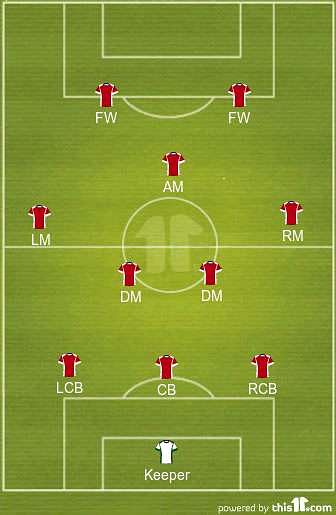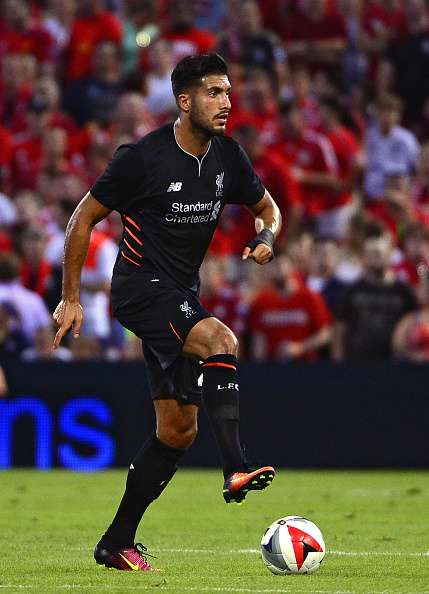
Football tactical systems explained: 3-5-2
Arguably the most popular in Italy, thanks in no small part due to Antonio Conte’s success with it with Juventus, it was seen a mini-renaissance over the past few years or so. Louis van Gaal also achieved success with it when he implemented it with the Dutch national team. The Italy team used the 3-5-2 to punch above their weight in the European Championships this year; again under the stewardship of Antonio Conte, a stern proponent of the system.
The pre-requisites would be wing-backs who fulfill their role as asked of them. They must be incredibly fit and tactically aware to make the system work. They must also work to balance their attacking tendencies with defensive prowess.
Over the years, variations of the system have been devised; the 3-4-3 (currently being used to great effect by Chelsea) and 3-4-2-1 being two of them. Pep Guardiola also used further variations for tactical flexibility at Bayern Munich. He used a 3-4-1-2, with Mario Gotze in the hole and Robert Lewandowski and Thomas Muller up top and a 3-1-2-1-3 with Xabi Alonso the deepest lying midfielder, Lahm in central midfield and the trio of Gotze, Lewandowski and Douglas Costa up-front.
Strengths
The system is tailored to prevent teams from counter-attacking quickly. The three central defenders should be able to handle any combination of the opponent’s strikers and the No. 10. The wing-backs are also usually positioned well enough to intercept opposing wide players before they can advance too far up the pitch.
The defensive structure is also helped by a midfield that tends to sit quite deep in order to cover the wing-backs should they be caught out further up-field when the opposition launches a counter attack.
However, as Conte showed against Spain in the round of 16 at the European Championships, the 3-5-2 is just as effective a foil for launching a quick counter-attack as it is for preventing them. The three midfielders (set up in either a 2, 1 variation or a 1, 2 variation) and the two wing-backs offer plenty of attacking threat for the opposition defence to worry about.
Also read: Tactical systems explained: 4-2-3-1
The two strikers playing up front also means it’s possible for the frontline to create and score chances with minimal assistance, especially if the ball is played to them quickly whilst springing a counter-attack.
It also counters the 4-5-1 system very well. It not only matches the midfield numbers but because they’re defending against a lone striker, it provides an opportunity for one of the back three to push up into midfield and provide support while in possession.
Weaknesses
The complexity of the formation, especially concerning the covering of team-mates and beginning attacks, demands a certain blend of players; trying to shoehorn players into the system rarely works out, and even if it does, it gets found out pretty quickly. Think Arsenal vs Liverpool in April, 2015. Liverpool had Emre Can, a midfielder at right centre-back, Lazar Markovic, a right-winger at left wing-back and Raheem Sterling, primarily a winger, playing up-front. It was a recipe for disaster, and disaster it was; the match ending 4-1 in favour of the Gooners.
The back three must include at least one player who is an excellent passer, while the other two must be stalwart defenders in their own right; adept at man-to-man marking and showing positional discipline.
It is also possible to play a zonal defensive marking system in a 3-5-2 formation, but doing so requires the speed of thought and movement to track opponents as they wander in and out of zones looking for gaps between defenders. This usually results in a midfielder playing in one of the three backline positions.
Conclusion
Juventus have shown having the right blend of players allows the system to flourish and considerable success can be achieved with it; they have their very own BBC to boast of. A back four of Chiellini, Bonucci, Barzagli and Buffon is the envy of teams everywhere, but they also have a perfect balance in midfield and in attack. Thus teams looking to implement it must ensure that they have the players who are suited to play in the system and also tactically aware enough to fulfill the roles assigned to them.


